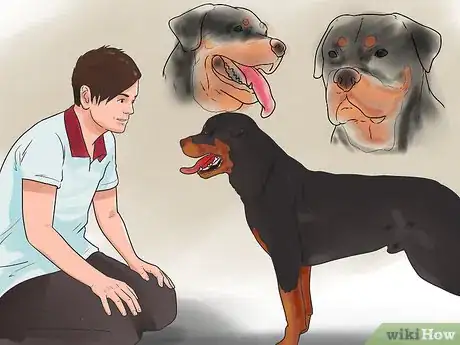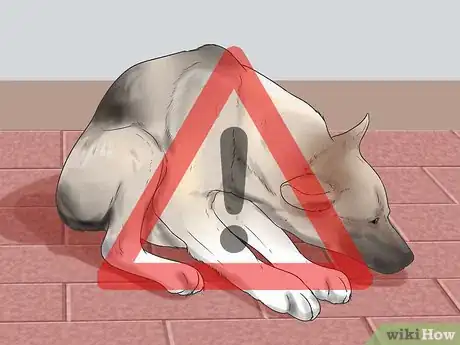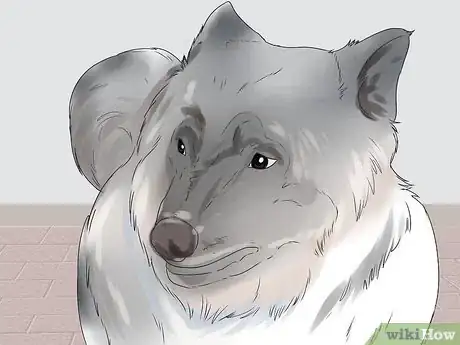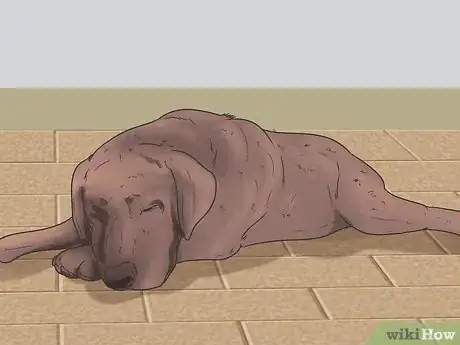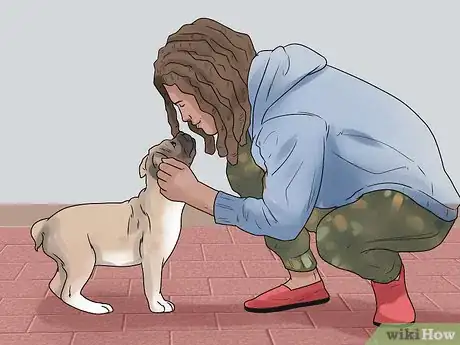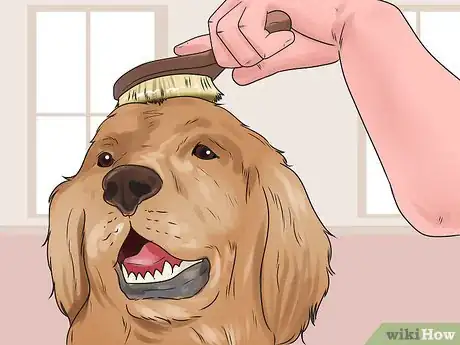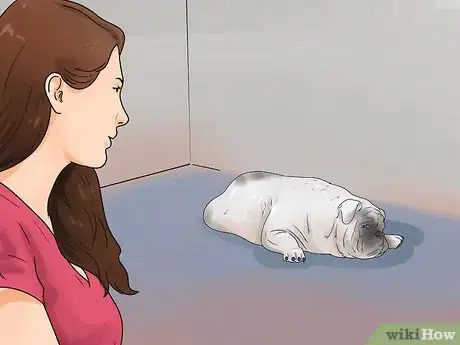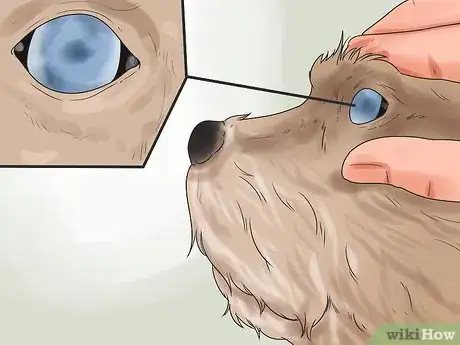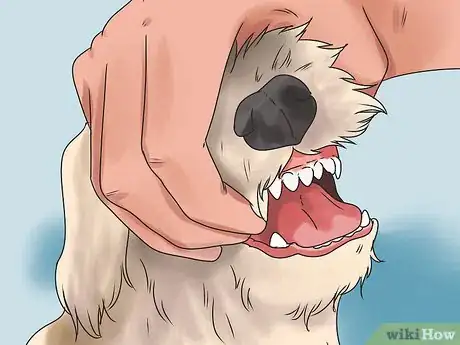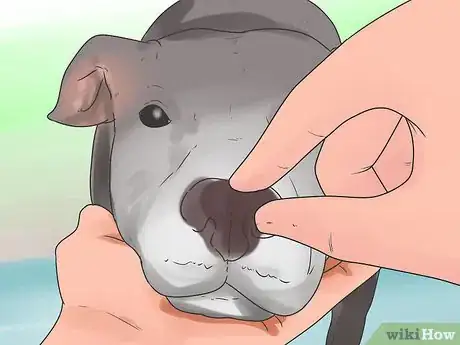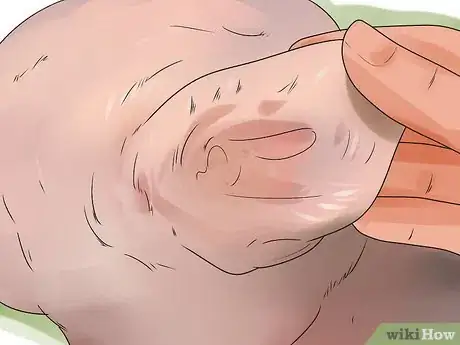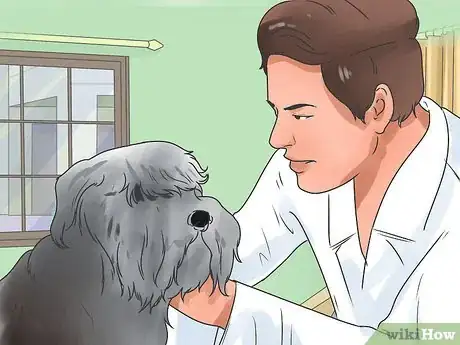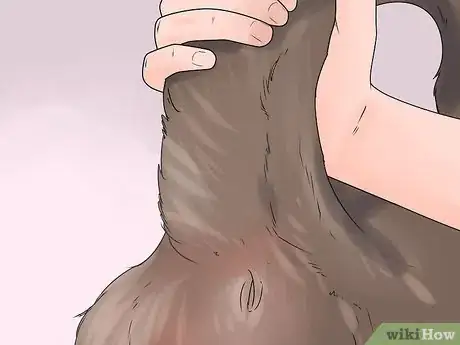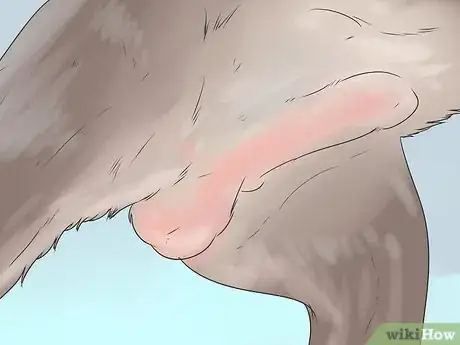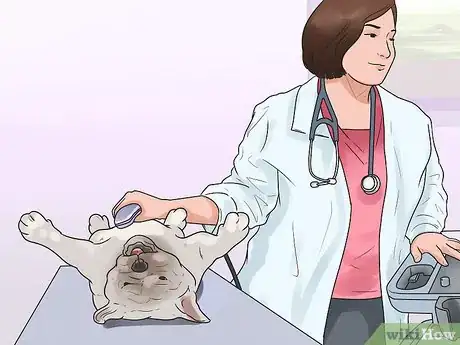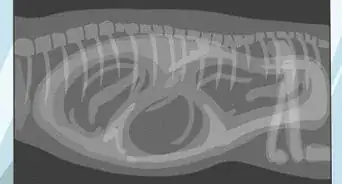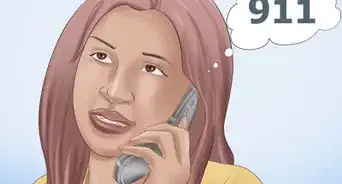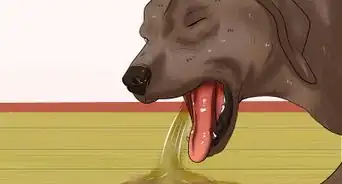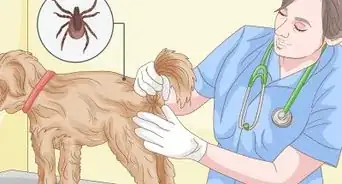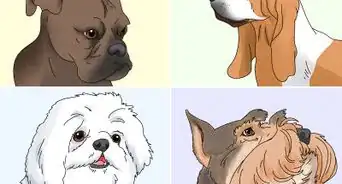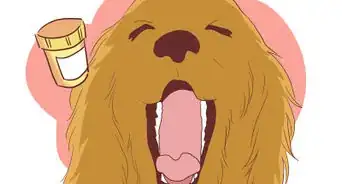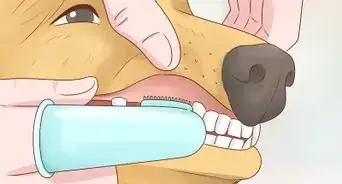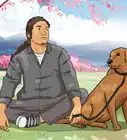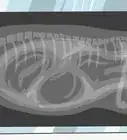This article was co-authored by Rendy Schuchat. Rendy Schuchat is a Certified Professional Dog Trainer and the Owner of the largest dog training facility, Anything Is Pawzible, based in Chicago, Illinois. With over 20 years of experience, Rendy specializes in positive dog training and behavior modification to help people build and strengthen their relationships with their dogs. She holds a BA in Psychology and Communications from the University of Iowa, an MA in Psychology from Roosevelt University, and a Certification in Dog Obedience Instruction from Animal Behavior Training and Associates. Rendy was voted one of the Best/Favorite Dog Trainers in Chicago by Chicagoland Tails Reader’s Choice Awards multiple times and was voted Chicago Magazine’s “Best Dog Whisperer” in 2015.
wikiHow marks an article as reader-approved once it receives enough positive feedback. This article received 12 testimonials and 100% of readers who voted found it helpful, earning it our reader-approved status.
This article has been viewed 354,739 times.
Do you ever wonder if your dog is truly doing all right? As a dog owner, you have a responsibility to care for your furry friend's physical and mental well being. It is a great idea to stop every now and again and ask yourself if the dog is happy and healthy. In order to assess this, you will need to look for physical wellness, as well as looking for any psychological problems, including boredom and frustration. With regular check-ups, you can keep up to date with whether your canine pal is truly content and in tip-top shape.
Steps
Assessing Your Dog's Mental Well Being
-
1Get to know what's normal for your dog.[1] Keep the big picture in mind and get to know what's normal for your dog. Make yourself familiar with how far the dog likes to walk, how it reacts when you come in from work, how sweet-tempered or grumpy it is, how much water it drinks, what its stool looks like, how often it moves its bowel a day, what the inside of its ears look like, and what its breath smells like.
- For example, some dogs are greedy eaters whilst others are finicky. If your dog is usually a greedy eater, it's significant if the dog refuses its food. However, if you own a lapdog that turns its nose up at anything but best steak, then refusing a bowl of food it less of a worry.
- If you know all of these things like the back of your hand, you are ideally placed to spot changes that could indicate the dog is unwell.
-
2Assess your dog's emotions through its behavior and body language.[2] Dogs experience emotions, such as grief, depression, boredom, and frustration. The trick as an owner is to recognize these emotions. Most commonly, the first sign to be aware of is a change in behavior or body language.
- For example, if your dog is doing the things it normally enjoys, like chewing on a bone or running around the yard, it's probably happy.[3]
- Pay attention to your dog's usual body language. Is it holding its ears or tail lower than normal or is it shying away or taking a dominant stance when approached? These are body language signs that there could be something wrong.[4]
- A hint that your dog is bored or frustrated includes destructive behavior, digging, whining, barking, and crying. In this case, the dog is adopting a displacement activity, such as chewing the furniture, as an outlet for his frustration.
Advertisement -
3Look at the dog's facial expression. Many dogs are capable of expressing emotions, such as depression, on their faces. If your dog doesn't usually have doleful looking eyes or sad expressions, but suddenly does, then it is probably an expression of the dog's current emotions.[5]
- Good signs that your dog is healthy are that its eyes are bright, its ears are alert and attentive, and its tail is wagging.[6]
-
4Be aware of any physical changes to your dog. Physical changes could be symptomatic of mental stress or depression. For instance, pay attention if your dog stops grooming itself. Depressed or sick animals often stop taking care of themselves and their coat condition drops, becoming harsh, stray, and unkempt.
-
5Address possible causes of your dog's unhappiness. If your dog is sad or misbehaving, you should try to find the cause of the distress and then attempt to change the situation, if you can. Not all problems can be fixed, obviously, but some can!
- If your dog is stressed out about a new routine or home, for instance, that cannot always be changed but you can comfort your dog and try to make transitions as easy as possible.
Assessing Your Dog's Physical Health
-
1Groom and inspect your dog's body regularly. One of your duties as an owner is to groom your dog regularly. As well as keeping its coat in good condition and tangle free, grooming your dog is an ideal time to run a mini-physical exam at home. This will help you become more familiar with your healthy dog's body. If something changes in the state of your dog's body, then the chances are that you picked up on a problem early on.
- When performing a physical it is best to follow a set inspection pattern so that you don't accidentally skip anything. Most vets have the routine where they start at the head and work backwards.
-
2Stand back and assess your dog overall. Watch how the dog is standing or sitting. Does it look comfortable and relaxed, or does it have difficulty getting up or down? Watch the dog's breathing and count the number of breaths it takes a minute at rest. Normal is 20 - 30 a minute.[7]
- At a regular room temperature, not in excessive heat when the dog is panting to cool off, its breathing should be unhurried and difficult to see. Exaggerated breathing movements, especially when the dog uses its stomach muscles to haul air in and out of its lungs is a sign of breathing difficulty and should be checked out.[8]
- What about the dog's weight? Is it gaining or losing weight, and does this coincide with an increase or decrease in appetite? It is worth getting weight change checked out by your vet since it can be an important clue to ill health.
- Is the dog alert, bright-eyed, and wagging its tail, or is it hanging its head and sluggish with its tail tucked between its legs?
-
3Check your dog's eyes. With your index finger and thumb, gently ease the eyelids apart. If its eyes are nice and clear and you can see your reflection in them, then its eyes are normal. Indications of ill health include yellowing (jaundice) of the whites of the eye, inflammation of the whites (could indicate an allergy or infection), and fogginess on the surface (an ulcer or possibly increased pressure within the eye).[9]
- Check for discharges from the eye. A thick yellow or green discharge is an indication of infection.
- Eyes are delicate structures and if you suspect a problem then seek veterinary attention. To ignore a serious problem could mean the dog losing his sight.
-
4Check your dog's teeth. Lift the dog's lip to see its teeth. Clean healthy teeth look much like our own (except a different shape) with pink gums and white enamel. Look for browny-yellow tartar deposits on the surface of the teeth, inflamed or bleeding gums (gingivitis), or a bad odor from the mouth. All these signs indicate dental attention is required.[10]
-
5Look and touch your dog's nose. It is an old wives tale that a cold wet nose is a sign of good health. Many perfectly healthy dogs have warm dry noses, so don't panic if this is the case. Get to know what's normal for your dog's nose. Certain autoimmune skin problems can affect the nose so if the leather button of the nose is inflamed, crusty, or bleeding, then seek veterinary attention.[11]
-
6Examine your dog's ears. Look inside its ears and compare one with the other. They should both look the same. You should see the entrance to the ear canal as a dark hole. The lining of the ear flap should look like regular skin and not be thickened, inflamed, reddened, or crusty. If you notice the latter, or if there is a discharge in the ear (ranging from thick black wax to smelly pus), then seek veterinary attention.[12]
- Don't forget to smell your dog's ears! It should smell of nothing other than "dog." If there is an unpleasant smell, which makes you recoil, seek veterinary help.
-
7Inspect your dog's coat. Check for flake-free fur that is glossy and smooth (in breeds that don't have wiry coats.) Part the fur to check the skin. There should be no greasy feel to the coat and no dandruff, black specks within the coat, inflamed skin, scabs, or skin discoloration. The latter all indicate skin disease and warrant fur investigation by a vet.[13]
-
8Look under your dog's tail. It's easy to turn a blind eye to this area, but it is important to check since problems with infected anal glands or cancerous lumps around the anus are best spotted early on. Be vigilant for a loss of symmetry to the anal ring (if one side is more swollen than the other), sinuses (channels) that are discharging or weeping fluid, or lumps standing proud of the skin.[14]
-
9Check testicles or mammary glands. Make a point of checking that your male dog has testicles of an equal size. Enlargement on one side can be a sign of testicular cancer. Likewise, for female dogs, run your hand along both sides of the mammary area to check for any lumps. Any abnormalities need to be checked by a vet.[15]
-
10Check for lumps and bumps. Run your hand over your dog's body to check for lumps and bumps. It is advisable to get any lump checked out by your vet, for even some seemingly innocuous looking lumps have the potential to be something sinister.
- If you are unsure if it's worth seeing the vet, then measure the size of the lump and write it down. Check the lump again a couple of weeks later and remeasure it. If the lump is changing rapidly, is inflamed, or bothering the dog then a vet check-up is essential.[16]
Expert Q&A
Did you know you can get expert answers for this article?
Unlock expert answers by supporting wikiHow
-
QuestionWhy is my dog drinking less than half the amount of water it usually drinks?
 Pippa Elliott, MRCVSDr. Elliott, BVMS, MRCVS is a veterinarian with over 30 years of experience in veterinary surgery and companion animal practice. She graduated from the University of Glasgow in 1987 with a degree in veterinary medicine and surgery. She has worked at the same animal clinic in her hometown for over 20 years.
Pippa Elliott, MRCVSDr. Elliott, BVMS, MRCVS is a veterinarian with over 30 years of experience in veterinary surgery and companion animal practice. She graduated from the University of Glasgow in 1987 with a degree in veterinary medicine and surgery. She has worked at the same animal clinic in her hometown for over 20 years.
Veterinarian
-
QuestionMy dog doesn't have fleas but is licking her paws and legs. Why?
 Pippa Elliott, MRCVSDr. Elliott, BVMS, MRCVS is a veterinarian with over 30 years of experience in veterinary surgery and companion animal practice. She graduated from the University of Glasgow in 1987 with a degree in veterinary medicine and surgery. She has worked at the same animal clinic in her hometown for over 20 years.
Pippa Elliott, MRCVSDr. Elliott, BVMS, MRCVS is a veterinarian with over 30 years of experience in veterinary surgery and companion animal practice. She graduated from the University of Glasgow in 1987 with a degree in veterinary medicine and surgery. She has worked at the same animal clinic in her hometown for over 20 years.
Veterinarian Licking is often due to skin irritation triggered by parasites or allergies. Some parasites, such as the sarcoptes mite, are too small to see with the eye but make the dog incredibly itchy. Therefore it's important to rule out all parasites, not just fleas. A common cause of itchiness is an allergic reactions to allergens in the environment such as pollens, mold spores, dust mites, or food.
Licking is often due to skin irritation triggered by parasites or allergies. Some parasites, such as the sarcoptes mite, are too small to see with the eye but make the dog incredibly itchy. Therefore it's important to rule out all parasites, not just fleas. A common cause of itchiness is an allergic reactions to allergens in the environment such as pollens, mold spores, dust mites, or food. -
QuestionHow can you tell if a dog is sad?
 Pippa Elliott, MRCVSDr. Elliott, BVMS, MRCVS is a veterinarian with over 30 years of experience in veterinary surgery and companion animal practice. She graduated from the University of Glasgow in 1987 with a degree in veterinary medicine and surgery. She has worked at the same animal clinic in her hometown for over 20 years.
Pippa Elliott, MRCVSDr. Elliott, BVMS, MRCVS is a veterinarian with over 30 years of experience in veterinary surgery and companion animal practice. She graduated from the University of Glasgow in 1987 with a degree in veterinary medicine and surgery. She has worked at the same animal clinic in her hometown for over 20 years.
Veterinarian
References
- ↑ http://www.readersdigest.ca/pets/10-ways-tell-if-your-dog-is-healthy/#rPDyoBmPTRy2wkcy.97
- ↑ http://pets.webmd.com/features/what-is-your-dog-telling_you
- ↑ Rendy Schuchat. Certified Professional Dog Trainer. Expert Interview. 26 January 2021.
- ↑ https://www.aspca.org/pet-care/virtual-pet-behaviorist/dog-behavior/canine-body-language
- ↑ http://pets.webmd.com/features/what-is-your-dog-telling_you
- ↑ Rendy Schuchat. Certified Professional Dog Trainer. Expert Interview. 26 January 2021.
- ↑ Small animal Internal Medicine. Nelson & Couto. Mosby.
- ↑ Small animal Internal Medicine. Nelson & Couto. Mosby.
- ↑ Small animal Internal Medicine. Nelson & Couto. Mosby.
- ↑ Small animal Internal Medicine. Nelson & Couto. Mosby.
- ↑ Small animal Internal Medicine. Nelson & Couto. Mosby.
- ↑ Small animal Internal Medicine. Nelson & Couto. Mosby.
- ↑ http://www.readersdigest.ca/pets/10-ways-tell-if-your-dog-is-healthy/#B2iToskfDLcA0RBx.97
- ↑ Small animal Internal Medicine. Nelson & Couto. Mosby.
- ↑ Small animal Internal Medicine. Nelson & Couto. Mosby.
- ↑ Small animal Internal Medicine. Nelson & Couto. Mosby.
About This Article
To check if your dog is happy and healthy, groom its body regularly and look for anything different or unusual. Check its eyes to see that they’re clear and reflective, which are signs of healthy eyes. Additionally, look at your dog’s teeth. If your dog is healthy you’ll see nice white tooth enamel and pink gums. You can also examine your dog’s ears to be sure there’s no red, inflamed, or crusty skin, which can indicate a problem. Finally, pay attention to your dog’s facial expressions and body language, which are good reflections of your dog’s emotional health. To learn from our Veterinary reviewer how to check your dog for lumps or bumps that may merit a trip to the vet’s, read on!
